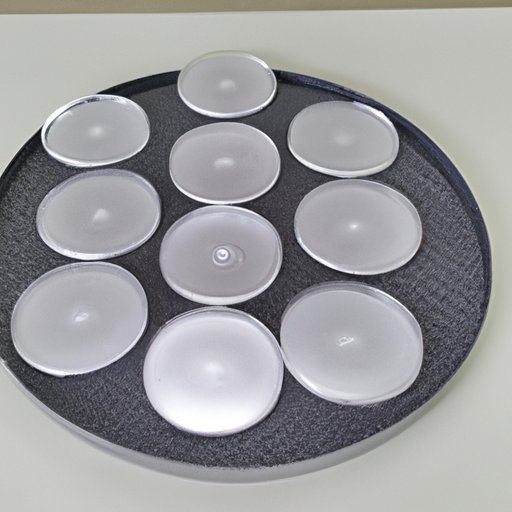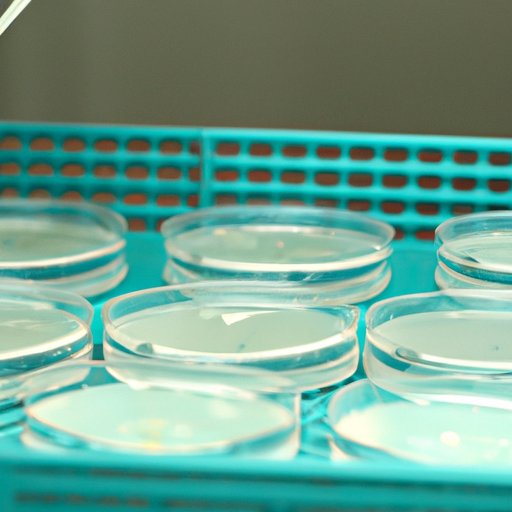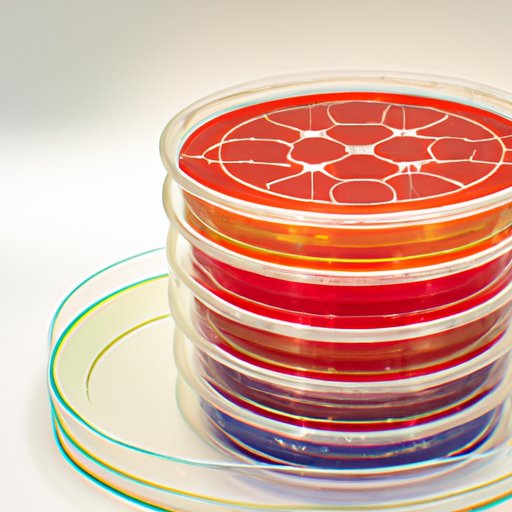Introduction
A well plate, also known as a microplate, is an essential tool for scientists in many fields. It is a flat plastic dish with multiple wells, or small indentations, used to hold samples in scientific experiments. Well plates are widely used in laboratories, allowing scientists to quickly and accurately process large amounts of samples at once. In this article, we’ll explore the basics of well plates, including what they are and what they’re used for in science.
Exploring the Basics of Well Plates: What They Are and What They’re Used For in Science
Well plates come in various shapes and sizes, ranging from 6-well plates to 1536-well plates. The wells are typically arranged in a rectangular grid, and each well is typically shaped like a circle or square. Depending on the type of experiment, the wells may contain samples of liquid, powder, or solid material. Well plates are often made from polystyrene, which is a lightweight and flexible plastic.
Well plates are used in a variety of scientific experiments, including cell culture, protein analysis, drug screening, and DNA sequencing. They are especially useful for high-throughput experiments, where multiple samples need to be analyzed quickly and accurately. Well plates are also used in medical diagnostics, such as for testing blood samples for diseases.
The advantages of using well plates include the ability to process large numbers of samples simultaneously, as well as increased accuracy and consistency. Well plates also allow scientists to quickly collect and analyze data, enabling them to accelerate the pace of research. Finally, well plates help minimize waste by allowing scientists to use only the exact amount of sample needed for each experiment.

A Guide to Using Well Plates for Scientific Experiments
Using well plates for scientific experiments requires careful preparation and attention to detail. First, the well plate must be properly sterilized and disinfected to prevent contamination. Then, the samples must be inserted into the wells in the correct order. This ensures that the results can be accurately compared and analyzed.
Once the samples have been inserted into the wells, the well plate is ready to be used in the experiment. Depending on the type of experiment being conducted, the well plate may be placed in an incubator, centrifuge, spectrophotometer, or other type of device. After the experiment has been completed, the results can be analyzed from the well plate.
Understanding Well Plates: An Overview of Their Uses in Science
Well plates are used in many different scientific fields, including life sciences, chemistry, and physics. In life sciences, well plates are commonly used in cell culture, protein analysis, and drug screening. In chemistry, they are used for measuring the concentration of chemicals in solutions. In physics, well plates are used for measuring light intensity, temperature, and other physical properties.
Specialty well plates are also available for different fields. For example, there are well plates designed specifically for immunological assays, as well as well plates with built-in sensors that can detect changes in temperature or pH levels. These specialty well plates can be used to measure a wide range of parameters, making them an invaluable tool for scientists.

How Well Plates Aid Scientists in their Research
Well plates can help scientists in a number of ways. By automating processes, they can reduce the time and effort required to conduct experiments. Well plates can also streamline data collection and analysis, allowing scientists to quickly and accurately compare the results of multiple experiments. Finally, well plates can help accelerate the pace of research by enabling scientists to quickly process large amounts of data.
In addition, well plates can help ensure accuracy and consistency in experiments. By standardizing the way samples are handled, well plates can reduce the risk of errors and help improve the reliability of results. And by minimizing the amount of sample used in each experiment, well plates can help reduce costs and make experiments more efficient.

The Benefits of Well Plates in the Lab: What They Do and How They Help
Well plates are invaluable tools for scientists in many fields. They can help enhance accuracy and consistency in experiments, while also increasing efficiency and reducing costs. Well plates can also help improve safety in the lab by minimizing the amount of sample used and helping to eliminate potential sources of contamination.
In addition, well plates can help scientists quickly collect and analyze data, enabling them to accelerate the pace of research. By automating processes and streamlining data collection and analysis, well plates can help scientists save time and effort, allowing them to focus on their research instead of spending time on tedious tasks.
Conclusion
Well plates are an essential tool for scientists in many fields. They are used to hold samples in scientific experiments, and can help enhance accuracy and consistency, increase efficiency, and reduce costs. Well plates can also help streamline data collection and analysis, and automate processes, enabling scientists to quickly and accurately process large amounts of data. Overall, well plates are a valuable asset for the scientific community, helping to improve the pace and accuracy of research.
(Note: Is this article not meeting your expectations? Do you have knowledge or insights to share? Unlock new opportunities and expand your reach by joining our authors team. Click Registration to join us and share your expertise with our readers.)
